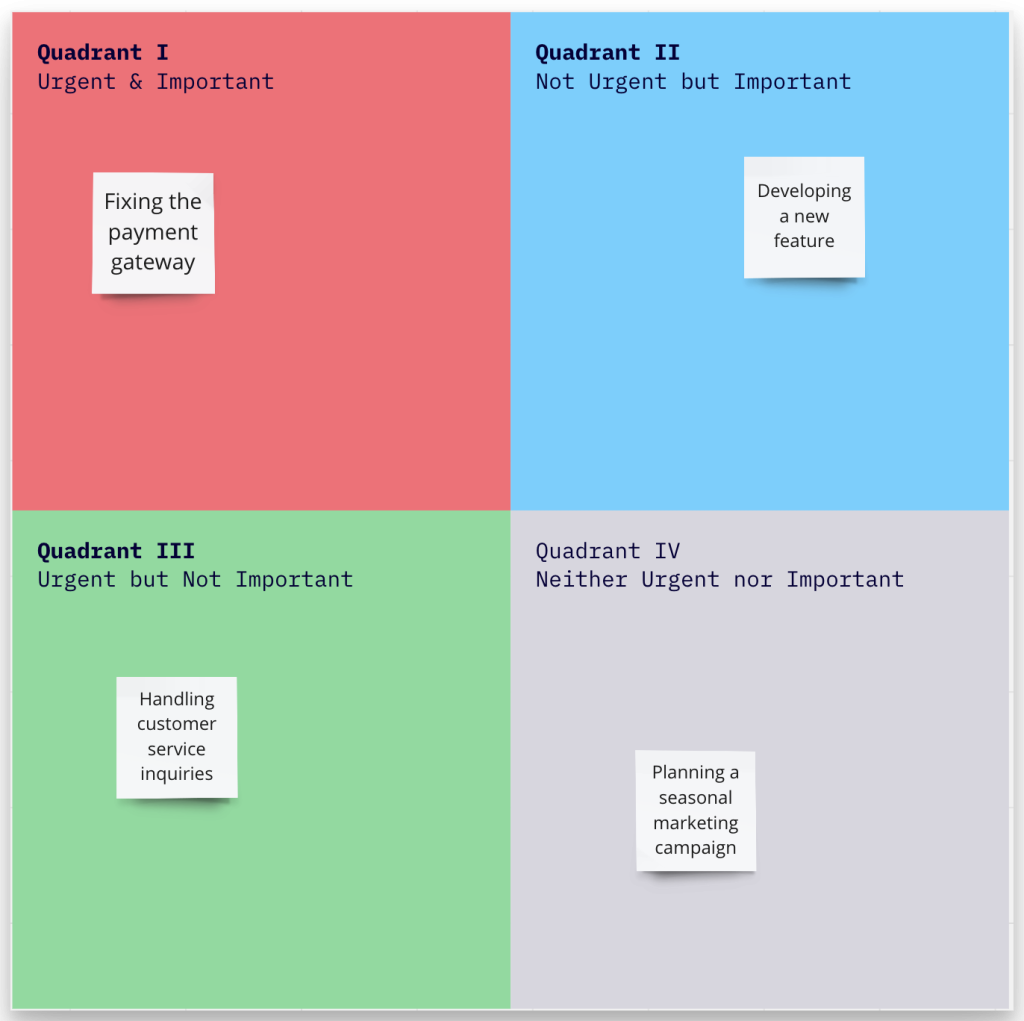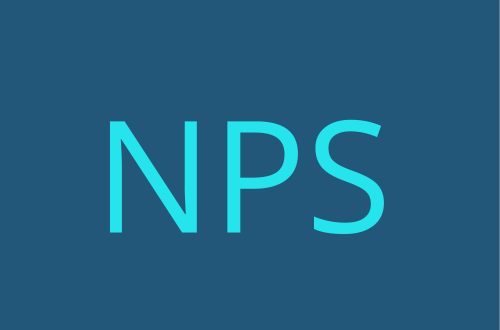
Boost Your Product Management Game with the Eisenhower Matrix: A Simple Strategy to Prioritize Like a Pro
Do you ever find yourself lost amidst the chaos of managing a multitude of tasks, features, and improvements in your product management journey? If your answer is a nod, then the Eisenhower Prioritising Matrix is your compass to navigate this tumultuous sea. For the uninitiated, it’s not an intricate algorithm from a sci-fi movie but a straightforward, practical tool to declutter your task management.
What is the Eisenhower Matrix?
The Eisenhower Matrix, also known as the Urgent-Important Matrix, helps you decide on and prioritise tasks by categorising them based on their urgency and importance, sorting out the less urgent and important tasks you should delegate or spend less time on.
Here’s a breakdown of the matrix
- Quadrant I (Urgent and Important): Tasks that must be addressed immediately.
- Quadrant II (Not Urgent but Important): Tasks that are crucial but not time-sensitive.
- Quadrant III (Urgent but Not Important): Tasks to delegate to others.
- Quadrant IV (Not Urgent and Not Important): Tasks that could potentially be eliminated.

Our Example Eisenhower Matrix Layout

- Quadrant I (Urgent & Important): Here, you’d place time-sensitive and critical tasks. They need immediate attention.
Example: “Fixing the payment gateway” – This is a critical task because any problem with payments directly affects sales and the trust of customers. It’s both urgent and important.
- Quadrant II (Not Urgent but Important): This quadrant is for tasks that don’t need immediate attention but are crucial for long-term objectives.
Example: “Developing a new feature” – While it’s important for improving customer engagement and potentially boosting sales, it doesn’t have the immediacy of, say, a broken payment gateway. It’s not urgent, but it’s definitely important.
- Quadrant III (Urgent but Not Important): Tasks that require immediate attention but aren’t necessarily critical to core objectives would fit here. These tasks can often be delegated.
Example: “Handling customer service inquiries” – These are time-sensitive (because customers are waiting for answers), but they might not be core to your role as a product manager, especially if there’s a dedicated customer service team. Hence, they’re urgent but can be delegated, making them less important to your specific role.
- Quadrant IV (Not Urgent & Not Important): This is where tasks that are neither immediacy nor critical to long-term goals reside. They can be postponed or even eliminated.
Example: “Planning a seasonal marketing campaign” – If this campaign isn’t aligning with immediate business goals, it’s neither urgent nor important in the current scenario.
By placing tasks within this matrix, you can quickly understand where your attention should be directed and what tasks you might want to delegate or defer. It’s a powerful tool for ensuring that critical items don’t fall through the cracks while also preventing burnout by not treating every task as a top-priority emergency.
Applying the Eisenhower Matrix in Product Management
Setting Clear Objectives
Define what urgent and important mean in the context of your product’s lifecycle and the company’s strategic goals.
Team Alignment
Ensure that your team is on the same page. Discuss and mutually agree upon the urgency and importance of tasks.
Consistent Review
The matrix is not a set-and-forget tool. Periodically review and reevaluate tasks to ensure they’re placed in the right quadrants.
Avoiding Burnout
By focusing on not just the urgent matters but also on the important tasks that are not urgent, you ensure that the team is working on future-proofing instead of just firefighting.
Data-Driven Decision Making
Ensure that data back the prioritisation and aligns with user needs and business objectives.

A Handy Tool for Every Product Manager
The Eisenhower Matrix stands out with its simplicity and efficacy in navigating through the chaotic waters of task prioritisation in product management. It brings clarity, promotes proactive management, and enhances focus towards impactful product development by differentiating between urgency and importance.
Discover Free Templates for the Eisenhower Matrix
Now that we’ve demystified the Eisenhower Matrix for product management, you may wonder, “How do I start implementing it in my routine?”. One of the easiest ways is to start with a template. Luckily, numerous online platforms offer free Eisenhower Matrix templates to help you kickstart your prioritisation journey. Let’s explore some of these resources:
Google Sheets or Microsoft Excel Templates
Both these platforms have an abundance of shared templates. A simple search for “Eisenhower Matrix template” in their respective template galleries can land you multiple options. You can then customise these sheets as per your preferences and needs.
Canva
Known for its easy-to-use design interface, Canva offers customisable templates for almost everything, including the Eisenhower Matrix. Simply search for “Eisenhower Matrix” in their template search bar, and you’ll find visually pleasing designs ready for use.
Miro
A popular collaborative online whiteboard platform, Miro is fantastic for visual tools like the Eisenhower Matrix. With its interactive boards, users can drag, drop, and reposition tasks efficiently. Miro’s vast template library includes ready-to-use Eisenhower Matrix templates, making it a breeze for teams to collaborate.
Wrap-Up
In a nutshell, the Eisenhower Matrix is not just a prioritisation tool. It’s a strategic weapon that, if used correctly, can translate into enhanced productivity and targeted focus in the world of product management. In our rapidly evolving market, aligning our efforts with what truly matters can be the difference between a product that fades away and one that stands the test of time.




